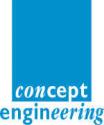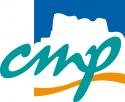8.2 EU Projects Special Session: Towards better EU-projects - Success Stories
Date: Wednesday 16 March 2016
Time: 17:00 - 18:30
Location / Room: Konferenz 6
Organiser:
Roberto Giorgi, University of Siena, IT
Chair:
Cristina Silvano, Politecnico of Milan, IT
Co-Chair:
Roberto Giorgi, University of Siena, IT
From lessons learned to best practices and correct scientific methodologies; In this session several cases are considered showing successful strategies to solve research and industry problems in a European dimension.
| Time | Label | Presentation Title Authors |
|---|---|---|
| 17:00 | 8.2.1 | COLLECTIVE KNOWLEDGE: TOWARDS R&D SUSTAINABILITY Speaker: Anton Lokhmotov, dividiti, GB Authors: Grigori Fursin1, Anton Lokhmotov1 and Ed Plowman2 1dividiti, GB; 2ARM, GB Abstract Research funding bodies strongly encourage research projects to disseminate discovered knowledge and transfer developed technology to industry. Unfortunately, capturing, sharing, reproducing and building upon experimental results has become close to impossible in computer systems' R&D. The main challenges include the ever changing hardware and software technologies, lack of standard experimental methodology and lack of robust knowledge exchange mechanisms apart from publications where reproducibility is still rarely considered. Supported by the EU FP7 TETRACOM Coordination Action, we have developed Collective Knowledge (CK), an open-source framework and methodology that involves the R&D community to solve the above problems collaboratively. CK helps researchers gradually convert their code and data into reusable components and share them via repositories such as GitHub, design and evolve over time experimental scenarios, replay experiments under the same or similar conditions, apply state-of-the-art statistical techniques, crowdsource experiments across different platforms, and enable interactive publications. Importantly, CK encourages the continuity and sustainability of R&D efforts: researchers and engineers can build upon the work of others and make their own work available for others to build upon. We believe that R&D sustainability will lead to better research and faster commercialization, thus increasing return-on-investment. Download Paper (PDF; Only available from the DATE venue WiFi) |
| 17:15 | 8.2.2 | LESSONS LEARNED FROM THE EU PROJECT T-CREST Speaker and Author: Martin Schoeberl, Technical University of Denmark, DK Abstract A three year EU project, such a T-CREST, with partners from all over Europe and with backgrounds from different domains is a challenging endeavor. Successful execution of such a project depends on more factors than simply performing excellent research. Within the three year project T-CREST eight partners from academia and industry developed and evaluated a time-predictable multiprocessor with an accompanying compiler and a worst-case execution time analysis tool. The tight cooperation of the partners and the shared vision of the need of new computer architectures for future real-time systems enabled the successful completion of the T-CREST project. The T-CREST platform is now available, with most components in open source, to be used for future real-time systems and as a platform for further research. Download Paper (PDF; Only available from the DATE venue WiFi) |
| 17:30 | 8.2.3 | MULTIPOS: MARIE CURIE NETWORK IN MULTI-TECHNOLOGY POSITIONING Speaker: Jari Nurmi, Tampere University of Technology, FI Authors: Jari Nurmi and Elena-Simona Lohan, Tampere University of Technology, FI Abstract The global navigation market (products and services) is expected to exceed 160 billion EUR revenue in 2015 with significant growth being driven by mobile terminals. Future wireless society needs trustworthiness of the wireless positioning device and eco-friendliness of the transmission-reception process. These are triggered by the user requirements, preferences and targeted applications, and by the type of the environment where navigation takes place. A link has been missing between these user needs/environment awareness (or application layer) and the physical layer where the wireless device is actually designed. The missing link can be created by cognitive approaches, borrowed on one hand from cognitive human behavior, and on the other hand from cognitive computing. Building a cognition stage between the application and physical layers creates a myriad of new possibilities for flexible location-based services and positioning-based applications. MULTI-POS training network is bridging the gap between the lower technology layer and upper application layer involved in wireless mobile location. In addition, MULTI-POS offers comprehensive training to young fellows in the broad field of wireless location, creates novel technologies and business models for the future location-enabled wireless devices, promotes the exchange of fellows in mixed academic-industrial R&D trajectories and in multiple European cultures, and will initiate an educational and research framework that unifies the currently fragmented research activities on technological and applications aspects of wireless navigation. There is strong involvement of industrial partners in the network to accomplish all this. Download Paper (PDF; Only available from the DATE venue WiFi) |
| 17:45 | 8.2.4 | PROGRAM TRANSFORMATIONS IN THE POLCA PROJECT Speaker: Jan Kuper, University of Twente, NL Authors: Jan Kuper1, Lutz Schubert2, Kilian Kempf3, Colin Glass4, Daniel Rubio Bonilla4 and Manuel Carro5 1University of Twente, NL; 2University of Ulm, DE; 3Ulm University, DE; 4High Performance Computing Centre Stuttgart, DE; 5Imdea Software Institute Madrid, ES Abstract The POLCA project develops annotations on fragments of imperative code to guide program transformations for better utilization of resources. These annotations express the computational essence of the code fragments without referring to memory usage or execution time. That makes the annotations mathematical in nature such that provably correct transformations can be applied to them and the corresponding code fragment can be transformed accordingly for more optimal resource usage, for example on a multi-core platform or on an FPGA. Download Paper (PDF; Only available from the DATE venue WiFi) |
| 18:00 | 8.2.5 | COMPUTATION AND COMMUNICATION CHALLENGES TO DEPLOY ROBOTS IN ASSISTED LIVING ENVIRONMENTS Speaker: Michael Hübner, Ruhr University Bochum, DE Authors: Georgios Keramidas1, Christos Antonopoulos1, Nikolaos S. Voros1, Fynn Schwiegelshohn2, Philipp Wehner2, Jens Rettkowski2, Diana Göhringer2, Michael Hübner2, Stasinos Konstantopoulos3, Theodore Giannakopoulos4, Vangelis Karkaletsis4 and Vaggelis Mariatos5 1Technological Educational Institute of Western Greece, GR; 2Ruhr University Bochum, DE; 3NCSR Demokritos, GR; 4Institute of Informatics and Telecommunications, NCSR "Demokritos", GR; 5AVN Innovative Technology Solutions, CY Abstract Demographic and epidemiologic transitions have brought forward a new health care paradigm with the presence of both growing elderly population and chronic diseases. Recent technological advances can support elderly people in their domestic environment assuming that several ethical and clinical requirements can be met. This paper presents an architecture that is able to meet these requirements and investigates the technical challenges introduced by our approach. Download Paper (PDF; Only available from the DATE venue WiFi) |
| 18:15 | 8.2.6 | ATHENIS 3D: AUTOMOTIVE TESTED HIGH-VOLTAGE AND EMBEDDED NON-VOLATILE INTEGRATED SOC PLATFORM WITH 3D TECHNOLOGY Speaker: Ewald Wachmann, ams AG, AT Authors: Ewald Wachmann1, Sergio Saponara2, Cristian Zambelli3, Pierre Tisserand4, Jean Charbonnier5, Tobias Erlbacher6, Saeideh Gruenler6, Christian Hartler1, Joerg Siegert1, Pierre Chassard4, Dieu-My Ton4, Lorenzo Ferrari2 and Luca Fanucci2 1ams AG, AT; 2University of Pisa, IT; 3University of Ferrara, IT; 4Valeo Electrical System, FR; 5CEA-Leti, FR; 6Fraunhofer IISB, DE Abstract The ATHENIS_3D FP7 EU project aims at providing new enabling technologies (analog, digital and power components) for high-voltage and high-temperature applications, tested for power systems of new hybrid/electrical vehicles. Innovation is exploited at process/device level (3D chip stacking, wafer level packaging, trench capacitors and TSV-inductors integrated in the interposer, high-reliable non-volatile Magnetic RAM), circuit-level (inductorless high-voltage DC DC converter, high-temperature 28nm System-on-Chip platform) and system-level (compact 3D embedded power mechatronic system). Enabling high integration levels of complex systems, operating in harsh environments, in a single packaged 3D device, ATHENIS_3D allows for one order of magnitude area reduction vs. today PCB-based power and control systems. Integration costs will be consequently reduced in key industrial sectors for Europe where high-voltage/temperature operations are mandatory (vehicles, avionics, space/defence, industrial automation, energy). Download Paper (PDF; Only available from the DATE venue WiFi) |
| 18:30 | End of session | |











